Research Article / Open Access
DOI: 10.31488/jjm.1000118
Portal hypertension, cirrhosis of liver and the unsuspected intrinsic property of melanin to dissociate the water molecule, like chlorophyll in plants
Arturo Solís Herrera
Human Photosynthesis® Research Center, Aguascalientes 2000, México
*Corresponding author:Arturo Solís Herrera, MD, PhD, Human Photosynthesis® Research Center, Aguascalientes 2000, México
Abstract
Portal hypertension is a pressure in the portal venous system that is at least 5 mm Hg higher than the pressure in the inferior vena cava. This increased pressure results from an anatomic or functional obstruction to blood flow from any point in the portal system´s origin through the hepatic veins, or from an increase in blood flow in the system. The complications of portal hypertension (gastrointestinal hemorrhage, hepatic encephalopathy, hepatorenal syndrome, and ascites) continue to be the cause of significant morbidity and mortality. It is one of the most serious sequelae of chronic liver disease. Energy, defined as everything that produces a change, it has a preponderant role in the general failure seen in liver problems related to portal hypertension and cirrhosis. In any system, when the fault is generalized, the main problem is the energy. If glucose were a source of energy, diabetics would fly, and hyperglycemia would be a protection factor in problems where energy is the problem, for example, cirrhosis, Alzheimer’s, heart failure, etc. The flow of energy and mass in the Eukaryote cell or the whole organism, explained based on glucose as a source of energy, as it has been to date, has led us to metabolic schemes that are controversial in 95%. However, the finding of the important bioenergetic role of melanin allows us to separate the role of glucose as the universal precursor of any organic matter, but that cannot provide the energy that its own metabolism requires. In this communicate, we described a substantive improvement of portal hypertension in a cirrhotic patient treated medically with an enhancer of the generation and distribution of energy (from melanin).
Keywords: portal hypertension, cirrhosis, photosynthesis, venous pressure, bleeding, energy.
Introduction
Cirrhosis is a common liver disease and the leading cause of liver related deaths in some countries. It is a spectrum of disease ranging from simple steatosis to cirrhosis [1]. The main clinical manifestations are acute jaundice and coagulopathy. So far, still it remains as a disease very difficult to treat. Despite years of research, the numerous examined agents (colchicine, acetylcysteine, prednisone, insulin, glucagon, etc.) have been unfruitful. At most, any short-time benefits are not maintained in the long term [2]. And worst, a small but significant increase in mortality was seen in 180-day mortality.
Creatinine, bilirubin, white cell count and age were associated with mortality. Portal pressure is important in this life-threatening liver disease. Since the 17th century, it was realized that structural changes in the portal circulation could cause gastrointestinal bleeding. The normal pressure in the inferior vena cava is 10-15 mm Hg. The Hepatic Venous Pressure Gradient (HVPG) ≥ 5 mm Hg defines portal hypertension. If the measurement exceeds 10 mm Hg it is called clinically significant portal hypertension, and above 12 mm Hg varicealhemorrhaging may occur.
Cirrhosis is a dynamic disease that gradually involves other organs and systems in a highly complex and poorly understood ways. Systemic and splanchnic vasodilatation can induce hyperdynamic circulation which is related with multi-organ failure such as hepatorenal syndrome and cirrhotic cardiomyopathy. Increased intrahepatic resistance results both from vasoconstriction and fibrosis3.
The dual blood supply allows the liver to remain relatively resistant to hypoxemia. The portal vein supplies 70% of the blood flow to the liver, but only 40 % of the liver oxygen supply. The remainder of the blood comes from the hepatic artery, and blood from both vessels mixes in the sinusoids. An average of 1.5 liters per minute is received by the liver.
It is not understood how it is that liver manages such a quantity of blood per minute, because it does it in a very exact way, that is: the normal pressure in the portal vein varies from 5-10 mm Hg. With 5 mm Hg to be elevated, it is considered portal hypertension. There are many causes of portal hypertension, and have been classified above the liver, within the liver, and below the liver.
However, despite the apparent diversity of causes, cirrhosis and portal hypertension have common characteristics among themselves, for example, ascites, esophagealvarices; portal hypertensive gastropathy; splenomegaly, hypersplenism with platelet and leukocyte sequestration. At the molecular level, the alteration of the physicochemical processes is not understood, for example, the exact mechanism of the peritoneal resorption of the splanchnic lymph.
Background
The portal venous system is a major vein that leads to the liver. Portal hypertension may be developed by intrinsic liver disease, obstruction, or structural changes that result in increased portal venous flow or increased hepatic resistance. Usually, vascular channels are smooth, but liver cirrhosis can cause to become irregular and tortuous with accompanying increased resistance to flow. This increased pressure resulting in varicesor dilations of the veins and tributaries. Pressure within the portal system is dependent upon both input and blood flow in the portal vein, and hepatic resistance to outflow. Normally portal vein pressure ranges between 1-4 mm Hg higher than the hepatic vein free pressure, and not more than 6 mm Hg higher than right atrial pressure. Pressure that exceed these limits define portal hypertension.
Cirrhosis and Portal Hypertension, Can be Considered as an Energy Problem?
The general overview of signs and symptoms in cirrhosis and portal hypertension led us to think in a generalized failure, characteristic of energy problem. Even though since the 17th century the problem of portal hypertension began to deepen, to date it is a health problem that is far from resolved. Patients continue to suffer in a very similar way since then to date.
The problem could be due to our obsolete concept that glucose is at the same time a source of energy and a source of biomass. Perhaps that is why we have not been able to advance in knowledge. Our discovery of the intrinsic property of melanin to dissociate the molecule from water, such as chlorophyll in plants [4], marks a before and after in the study and treatment of various diseases, including cirrhosis.
Melanin and Water Dissociation
During a descriptive observational study, about the three leading causes of blindness in the world, and its relationship with the tiny optic nerve vessels, which lasted 12 years and comprised 6 000 patients, started in 1990; we were able to decipher the actual biological role of melanin (Figure 1). Our conclusion of this study was that melanin possesses the unsuspected intrinsic property of transforming light into chemical energy, such as chlorophyll in plants; through the dissociation of the water molecule.
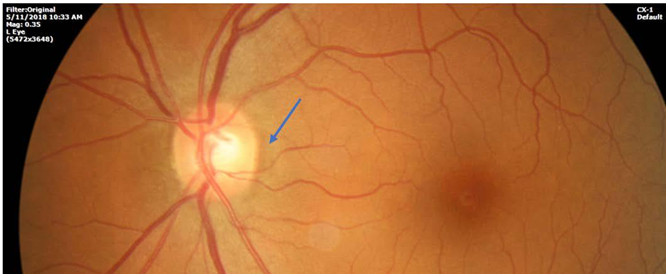
Figure 1.Example of the clinical photographs taken to living patients during the observational study that include 6000 patients. Melanin is signaled by blue arrow. During the twelve years (1990-2002) of the observational study we realized that melanin is always present nearby the optic nerve, more melanin means less blood vessels and vice verse, and the oxygen levels are significantly elevated meanwhile the amount of melanin is higher and vice versa. These were the main axioms that finally led us to understand the bioenergetic role of melanin in biological systems.
The reaction can be typed as follows.
2H2O → 2H2 + O2
But melanin is thousands of times more efficient than chlorophyll to transform light into chemical energy. For example, melanin absorbs the entire electromagnetic spectrum, from radio waves to gamma rays; and chlorophyll only absorbs the ends of the visible spectrum, that is: violet and red.
Another example of the superiority of melanin is that chlorophyll dissociates the water molecule irreversibly thereby oxygen is expelled to atmosphere, while melanin is not only able to dissociate the molecule from the water, but it supports the opposite reaction: the re-association of hydrogen and oxygen in the form of gas forming liquid water again.
What you can write as follows:
2H2O → 2H2 + O2 → 2H2O + 4e-
Which means that for every two water molecules that are reformed, 4 high-energy electrons are generated.
The Bioenergetic Role of Melanin
Melanin has always been relegated due to its remarkable stability. It was not thought possible that melanin had a biological role in the sequence of complex biochemical events that happen inside the cell. Its role as a simple solar filter seemed to be congruous enough.
But due to our finding about the unsuspected intrinsic property of melanin to transform electromagnetic radiation into chemical energy, through the dissociation of water, such as chlorophyll in plants; then we were forced to re-examine the entire biology of the Eukaryote cell at least.
Melanin possesses the unsuspected intrinsic property of transforming visible and invisible light into chemical energy, such as chlorophyll in plants. But it is thousands of times more efficient than the chlorophyll because in the leaves of the plants, the dissociation of the water is irreversible, since the oxygen, because of its toxicity is expelled to the atmosphere. By contrast, in melanin, oxygen is not expelled, but is preserved and re-used, as the dissociation of the water molecule is reversible (Figure 2).
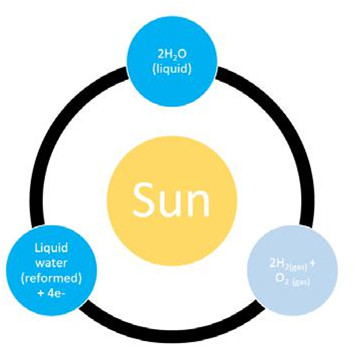
Figure 2.In the drawing is represented to the center, the sun as the main source of energy, the black circle represents the melanin, like the great transducer that transforms the visible and invisible light through the dissociation of the molecule of the water, that is the expensive part of the equation; and the circles represent the various stages of the water during the cycle. In the meridian of the 12 we have the liquid water, in the meridian of the 4 we have the hydrogen and molecular oxygen, which are gases, and the circle in the meridian of the 8 were we have the re-formed water, this is: liquid again, but for every two molecules of re-formed water are generated 4 high energy electrons (4e-).
Each cell of our body possesses the genetic code to synthesize melanin, and in fact each cell of our body contains it, which means that each one of them can generate its own energy by means of the transformation of light into chemical energy through the dissociation of the water molecule (Figure 3).
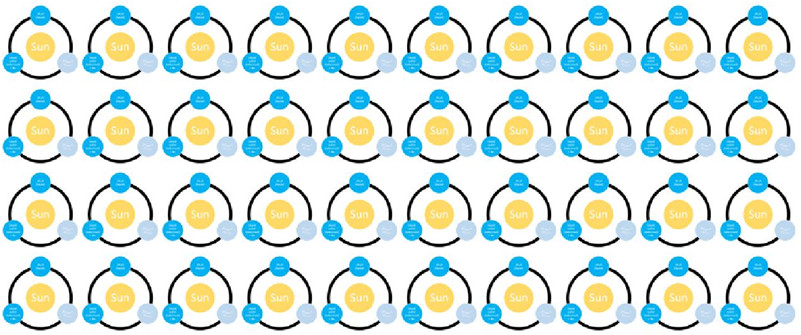
Figure 3.The scheme tries to represent the concept that each cell of our body is independent from an energetic point of view. Not so about the molecules that are used to build the biomass, because for this it is necessary the ingestion of food, digestion, and its consequent distribution to the organism through the circulatory system.
Glucose Cannot be at the Same Time Source of Energy and Biomass
The current dogma is that energy released during photosynthesis in plants is used mainly to glucose production, this is: carbon fixation. Theoretically the energy is stored in the covalent bonds of glucose. Supposedly, through respiration, mitochondria can recover this energy and then is used to impel the highly complex and astonishing accurate biochemical processes and reaction that unceasingly happen continuously in our body (Figure 4).
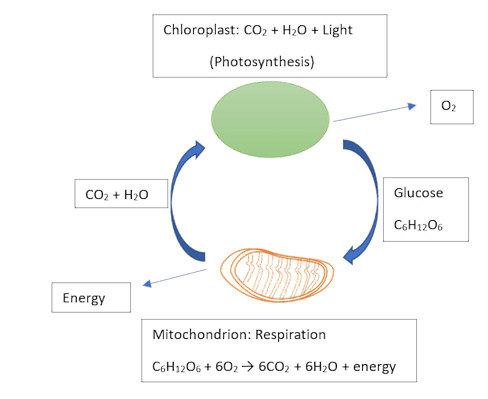
Figure 4.Supposedly, during photosynthesis, the solar energy is cumulated by the chloroplast in covalent bonds of sugar molecules, by not well understood mechanisms. Thereafter, during glycolysis and the respiration, made by mitochondria, the energy is recovered and supplied to the cell to impel their biochemical processes, also by mechanisms full of controversies in 95 % [5].
The current dogma has substantive discrepancies, for instance: The very structure of the mitochondrial membrane supposes a strong discrepancy in the biochemical/biomechanical model of the electron flow is, which is impermeable to the passage of the NADH reduced by the extra-mitochondrial glycolysis. Furthermore, one still cannot explain the fact that every NADH donates two electrons, for instance, while every O2 molecule needs four electrons to generate water, this is: 2H2O.
If glucose was source of energy, diabetic patients should fly. A detailed discussion of the discrepancies presented by the current model of the flow of energy and mass starting from glucose as a source of energy and carbon chains, is beyond the purpose of this article, so we only highlight that glucose is the Universal precursor of any organic matter, but it cannot provide the energy that its own metabolism requires.
The finding that melanin possesses the intrinsic property of transforming light into chemical energy, dissociating the molecule from water, like chlorophyll in plants, implies the need to revise current Biology from its very foundation, but at the same time opens a new era that will allow us to understand the diseases in another way, so that we can improve the quality of life of the sick.
The Body Doesn´T Take Care of the Name of the Diseases
The biochemical processes of the body are surprisingly accurate since the beginning of time and have since been repeated with the same sequence over millions of years of evolution. The very complex sequence and accuracy of the set of biochemical reactions that make up life are altered with relative ease by factors such as contaminated water and air, contaminated food, pesticides, herbicides, fertilizers; metals, plastics, industrial waste, emotional tensions, alcohol, addictive drugs, etc.
When the generation and distribution of energy from melanin is altered by factors such as the above, the body loses the balance between mass and energy, and when it happens the organism cannot do what it knows to do very well, because it has done million years, million times.
When an entity as complex as the Eukaryote cell or the organism is not in harmony, the effects are unpredictable, because the manifestation or manifestations of the imbalance depend on the interaction of many factors among themselves, so it can appear any disease. That is why the name of the disease does not matter, as the underlying problem is the imbalance between mass and energy. Thereby, biology and therefore medicine are going to have a significant impact on status, because of approaches to disease trends, risk factors, patterns of care, as well as public health interventions, functional abilities, and cost of health care will be modified in a substantive way.
The Generation and Distribution of Energy (From Melanin) in Portal Hypertension
Two of the main characteristics that result from the dissociation of water by melanin, explain crucial details of the physiology of the liver and the portal system. The first is that the oxygen levels present in the tissues come mainly from the dissociation of the water molecule, rather than from the atmosphere. The second characteristic is that the constant dissociation and reforming of the water tends to create a vacuum that would explain the low pressures to which the portal venous system normally works, because rather than being driven by the force of the left ventricle, the blood is attracted to the liver due to the constant vacuum resulting from the activity of melanin, this is: dissociation and reforming of the water molecule.
The portal venous system carries the blood from the abdominal gastrointestinal tract, the pancreas, the gallbladder, and spleen back to heart. The portal vein supplies 70 % of the blood flow to the liver, but less of the 40 % of the liver oxygen supply. The remainder of the blood comes from the hepatic artery, and blood from both vessels mixed in the liver sinusoids. The liver receives in average 1.5 liters per minute, and theoretically the dual blood supply allows the liver to remain relatively resistant to hypoxemia.
The above is somewhat difficult to accept because the left ventricle contraction force (120 mm Hg) is not enough to boost the amount of blood the liver receives per minute, so we would need a heart a million times larger (Dr. Gerald Pollack, unpublished data, 2015). On the other hand, the oxygen levels in any tissue are determined by the incessant and constant dissociation and reforming of the water that happen inside every cell of the organism, rather than by the mixture of arterial and venous blood i.e. in the hepatic sinusoids, so that this mixture of venous and arterial blood does not it can explain the relative resistance of the liver to hypoxemia, since neither arterial blood nor venous can significantly modify its oxygen content to compensate for alterations in the oxygen content of its counterpart.
Since the presence of melanin in all the cells of the organism presupposes the ability to dissociate the water, generating molecular hydrogen and molecular oxygen, then when analyzing the biology of the tissues, we must think that the present oxygen does not come from the Atmosphere, but the dissociation of the water molecule. Oxygen is an indirect indicator of the tissue levels of molecular hydrogen who is the ultimate carrier of energy in the entire universe.
The intrinsic property of melanin to dissociate the molecule from water, such as chlorophyll in plants, highlights that any cell of the organism can produce hydrogen and oxygen by itself, as all cells of the body have the genetic code to synthesize melanin, and the liver is no exception.Vasoconstriction and vasodilation do not modify the water molecule dissociation cup, but on the contrary, when the dissociation of the water molecule is altered, for example, by contaminated water, polluted air, pesticides, herbicides, Fertilizers, metals, plastics; emotional tensions, etc., then the blood vessels tend to constraints or dilate in abnormal form.
Proof that pressures within the hepatic sinusoids do not depend on the contraction force of the left ventricle but on the vacuum generated by the dissociation and reforming of the water molecule is the long-observed fact that the sinusoidal pressures remain relatively constant, although changes in blood flow are present. The remarkably constant blood flow of the hepatic sinusoids is currently explained (theoretically) because the blood flow of the hepatic artery is inversely proportional to the venous portal flow; but both systems have neither the flexibility nor the sufficient capacity to make significant adjustments in that regard.
The flow is determined by the vacuum generated by the constant transformation of liquid water to gas and new liquid water. An energetically very expensive process, because to reproduce it in the laboratory we require to heat the water to 2000°C. But the accuracy with which processes occur in the body is something that draws a lot of attention, because they are repeated with the same sequence, with the same accuracy, since the beginning of time. The relatively limited methods that we must dimension the different processes of the body have led us to classify them as continuous variables.
Each process of the cell or body depends on other processes, and at the same time is in equilibrium, (Figure 5, 6, 7). One of the many functions of energy is to maintain the shape of organic molecules, as the high-water content of the body tends to separate them, so, to maintain their shape and function require energy.
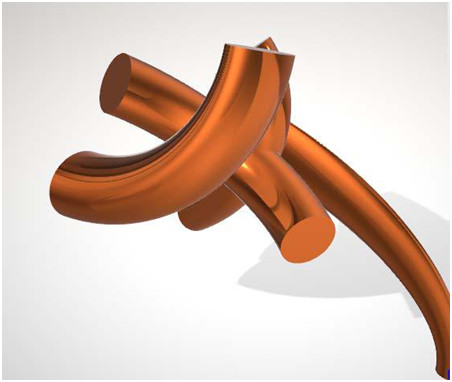
Figure 5.The diagram represents some of the thousands of processes of the body that occur constantly. The variable in horizontal position, is supported in turn in other variables
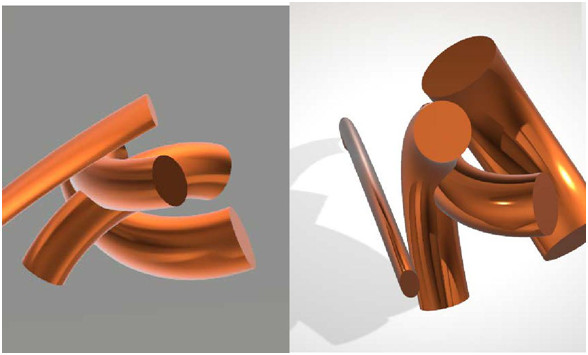
Figure 6.A different view of the figure 5, the interaction between the different molecules in the body is highly complex, but at the same time accurate, as has been done million years.
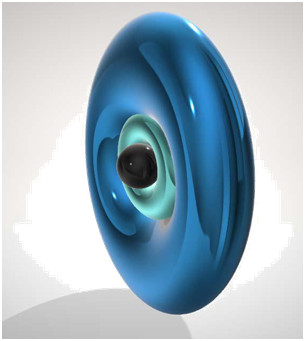
Figure 7.The computer-created views of the possible conformations of only 4 molecules, gives us the idea of the extraordinary complexity of the organism.
Melanin as Source Of Energy
Once the visible and invisible light is captured, the absorbed energy dissipates dissociating the water molecule, which is a strongly dashboard reaction. The energy that is released by dissociating the water molecule is captured and transported by the molecular hydrogen (H2) which is the carrier of energy par excellence in the entire universe6. Melanin releases a significative part of this molecular hydrogen symmetrically, in all directions, as growing spheres that follow the rules of the simple diffusion (Figure 7, 8, 9).
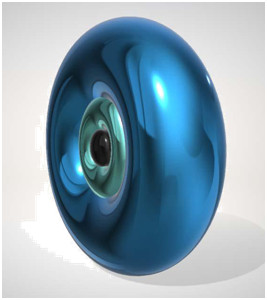
Figure 8.In this computer-created diagram, melanin is observed in the center, and two growing spheres of energy were represented. The closest to melanin would correspond to the sphere with the highest concentration of molecular hydrogen, resulting from the dissociation of water. The outermost sphere, with a more intense blue color, represents the sphere with the highest concentration of re-associated water and therefore with a higher concentration of high energy electrons.
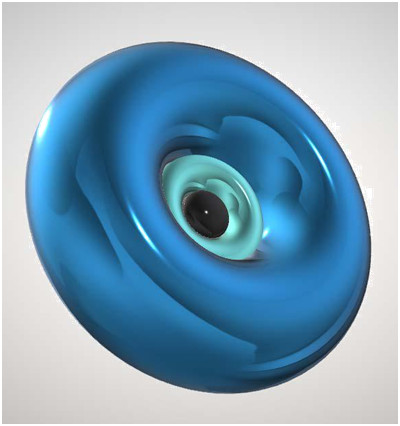
Figure 9.A different view of the image of Figure 8, depicting how the molecules of the molecular hydrogen result from the dissociation of water are spreading. Molecular hydrogen molecules are not combined with water, so they can be moved through the cell cytoplasm, and throughout their displacement are captured by different organelles and chemical processes that take advantage of their precious energy load and Powerful antioxidant effect.
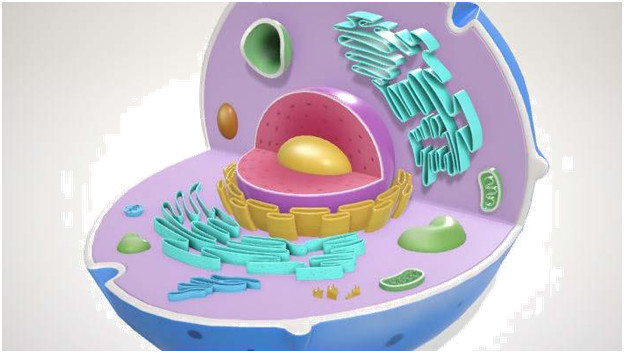
Figure 10.Usual representation of a eukaryote cell. The main elements are always represented, such as the cell nucleus (the largest organelle), the cell membrane, the rough and smooth endoplasmic reticulum, the mitochondria, the lysosomes, etc. But melanin granules (melanosomes), mainly located in the Perinuclear space, are never represented.
To date, it is a very rooted dogma to consider melanin as a simple solar filter. Its extraordinary stability of hundreds of millions of years7 was considered more as an obstacle than an advantage to assign some other relevant biological function to it. So, it is never represented in the schematics of the cells (Figure 10 and Supplementary Figure 11-30 ).
Towards a new physiopathology of portal hypertension
Portal hypertension(PHT) indicates a pressure greatest of 10 mm Hg or 14 cm of H2O in portal venous system [8]. Anatomy is generally described in the following way: Portal venous system drains blood from intestine, spleen and pancreas into the liver mainly the superior mesenteric, inferior mesenteric and splenic veins. The splenic vein and superior mesenteric vein join behind the head of pancreas to continue as portal vein in the free margin of hepatoduodenal ligament. Near the hilum of the liver, portal vein divides into right and left branches that supply the right and left hepatic lobes respectively. The portal vein supplies liver with 80 % of its blood and 20 % of its oxygen requirement.
However, oxygen supply to the liver was found to be dependent on the total blood flow only and not on the ratio of arterial to portal contribution [9]. The reported mean value of O2 uptake in the liver related to blood flow 110 ml/min – 100 g tissue, amounted to 6.08 ±0.2 ml O2/min -100 g liver (mean ± SEM); but the use of SEM means a wide dispersion of results, so it is hard to take conclusions.
Apparently, under conditions of low oxygen supply O2 extraction in the liver, a theoretical concept; reaches values of 97%, whereas the intestinal extraction does not surpass 75%. A rise in the oxygen supply surmounting normal values does not increase oxygen consumption. Thereby, oxygen liver consumption, if any; it is very stable.
The liver oxygen debt was payed back (theoretically) by a greater extraction, but extraction mechanisms are entirely theories. Supposedly, the oxygen supply to the liver can markedly increase due to intestinal metabolic hyperemia; however, it is difficult to explain mechanisms by which intestinal hyperemia or vasodilation could increase O2-content of blood.
There are significant contradictions trying to explain oxygen behavior in regards liver metabolism. However, at light of the finding of the intrinsic property of melanin to dissociate the water molecule; we can think that liver can produces oxygen at its own through the dissociation of the water molecule. Everything seems to be against the old theory that the liver gets energy by oxidizing glucose. For example, according to Henry’s law, the solubility of oxygen decreases as the temperature rises [10]. Thereby, liver temperature is a major drawback to adequate oxygenation of liver parenchyma, which leads to anaerobic glycolysis and acidosis.
And worst: at increasing temperature, liver metabolism increases proportionally11, because mechanisms of temperature regulation require energy expenditure. Thermoregulation is far more than the passive operation of heat transfer mechanisms (perspiration, conduction, convection, and radiation).
Thereby, under normal conditions, the liver cannot support aerobic metabolism at 37°C otherwise his metabolism should be mainly anaerobic, wasting ATP and glycogen stores, and releasing vast amounts of unprocessed lactic acid in blood. Liver oxygenation requirement increases exponentially as a function of temperature 12. This is: below a certain temperature threshold, liver oxygen requirement slightly increases with temperature, whereas above such threshold it increases dramatically.
Under experimental conditions, liver is unable to maintain baseline bile production rate at 37°C, supposedly due to oxygen deficiency. Furthermore, at 37°C a significant reduction of liver glycogen occurs.Concluding, at normal temperature, the liver function cannot be explained in basis of glucose as source of energy. So, if we use oxygen levels as indirect indicator of water dissociation, this is: higher levels mean more water dissociation and vice verse; and glucose is no longer considered as a source of energy but only as the universal precursor of any organic matter.
Clinical picture of patient with portal hypertension suggests a generalized failure (GI bleeding, splenomegaly, ascites, portosystemic encephalopathy, palmar erythema, gynecomastia, spider nevi, and loss of axillary and pubic hair) [13]. In any system, when energy is the problem, the fault is widespread. Liver is no exception.
Clinical Results
The therapeutic approach based on the pharmacological modulation of the dissociation of the water molecule, in this case by the application of the Medicament QIAPI 1® (Formulas Magistrales, SA de CV; MX) A very notable improvement was achieved in a hopeless male patient diagnosed with cirrhosis and portal hypertension.The patient was born in 1960, with a history of chronic alcoholism, intense for 35 years. At exploration showed generalized jaundice, abdominal distention, dyspnea of medium efforts, presence of ascites fluid in the abdominal cavity; Moderate to severe hepatomegaly, with data from diffuse liver parenchymal disease; Cirrhosis Marked splenomegaly, collateral circulation, portal hypertension; distended gallbladder with abundant mud, with small litos on the inside. No signs of acute inflammatory process in abdominal wall, pancreas and kidneys without alterations. Cardiomegaly Discreet. It refers to a lot of dryness in the skin.He’s evicted by his treating physicians. He is currently under treatment with Spironolactone, Inderalici, omeprazole, B-Complex, Ferranine, and Metadoxine (Supplementary Figure 31). Prior informed consent, all medications were suspended and treatment with QIAPI 1 ® was initiated at the dose of three drops under the tongue every hour during the day.After one year and three months of treatment with QIAPI 1® the clinical improvement is substantive. A control ultrasonographic study was taken at January 2, 2018, and its results are is in Supplementary Figure 32.
Conclusion
The discovery of the unsuspected ability of the human body to take energy from visible and invisible light through the dissociation of the water molecule by melanin, like chlorophyll in plants, opens a new era in biology and medicine. The understanding that glucose is the universal precursor of any organic matter in the body, but that this molecule is not able to provide the energy that its own metabolism requires, initiates a new stage of advances in the study and treatment of diseases previously considered incurable, such as hepatic cirrhosis and portal hypertension.The clinical and ultrasound improvement observed in cases like the one we describe in this work, are demonstrative of what we can expect in similar cases. The discovery of the unsuspected intrinsic ability of melanin to absorb visible and invisible light and dissipate the absorbed energy through the dissociation of the water molecule, opens a new chapter in the history of medicine that projects real hope for patients affected by chronic-degenerative problems.The pharmacological modulation of the hitherto unknown capacity of the human organism to dissociate the water molecule, such as plants; it implies a substantive advance in the knowledge that will allow us to improve the quality of life of the patients, and with a significantly lower cost both in effort, time and money.
Acknowledgements
This work was supported by Human Photosynthesis® Research Center.
References
MacSween RN. Alcoholic liver disease: morphological manifestations. Review by an international group. The Lancet. 1981; 1: 707–711.
Emily H, Laurence H, Richard P. Survival from alcoholic hepatitis has not improved over time. PlosOne. 2018.
Young Kim, Moon. Koo Baik, Soon, Lee, Samuel S. Hemodynamics alterations in cirrhosis and portal hypertension. Korean J Hepatol. 2010; 16: 347-352.
Herrera S, Esparza A, Ashraf MC, et al. Beyond mitochondria, what would be the energy source of the cell? CNS Agents in Med Chem. 2015; 15: 32-41.
Stobbe MD. The road to the knowledge: from biology to databases and back again. 2012, University of Amsterdam. Dissertation, 168.
Solis-Herrera A, Arias-Esparza MC, Solis-Arias RI,et al. The Unexpected capacity of melanin to dissociate the water molecule fills the gap between the life before and after ATP. Biomed Res. 2010; 21 (2): 223-226
Glass K, Ito S, Wilby PR, et al. Direct chemical evidence for eumelanin pigment from the Jurassic period. ProcNatlAcadSci U S A. 2012; 109(26): 10218-10223.
Mathur SK. Cirrhosis and portal hypertension. In: Haribhakti S., ed. Clinical GI Surgery – a reference book for surgeons. 1st ed. Ahmedabad: Haribhakti Education Foundation; 2008: 835-856
Lutz J, Heinrich H, Bauereisen E. Oxygen supply and uptake in the liver and the intestine. Pflugers Arch. 1975; 16: 360(1): 7-15.
Andrea F, Di PAsquaLaur G, Alberto B,et al. Metabolic Shift in liver: correlation between perfusion temperature and hypoxia inducible factor -1α. World J Gastroenterol. 2015; 28: 21(4): 1108-116.
BessemsM,‘t Hart NA, Tolba R, et al. The isolated perfused rat liver: standardization of a time-honoured model. Lab Anim. 2006; 40: 236-246.
Fujita S, Hamamoto I, Nakamura K, et al. Isolated perfusion of rat livers: effect of temperature on O2 consumption, enzyme release, energy store, and morphology. Nihon GekaHokan. 1993; 62: 58-70.
Brig JK. Portal Hypertension. 2012.
Received: June 14, 2018;
Accepted: June 28, 2018;
Published: June 30, 2018
To cite this article : Herrera AS. Portal hypertension, cirrhosis of liver and the unsuspected intrinsic property of melanin to dissociate the water molecule, like chlorophyll in plants. Japan Journal of Medicine. 2018: 1:4.
© Herrera AS, et al. 2018.
